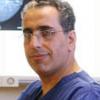A quick guide to epigenetics in medicine
Question; Do my genes predispose me to disease and illness?
Answer; Yes, however, genetic predisposition to disease is not solely down to just the presence of a disease-related gene (a specific DNA sequence), but also depends on whether or not the part of the DNA strand containing the genes coding for disease are expressed. In other words, just because your cells contain a gene that codes for a disease, does not mean that the gene will be activated.
Question; What is gene expression?
Answer; Genes can be active (expressed) or inactive. The function of a gene is to produce a specific type of protein, however, the gene can only be activated to produce a functional molecule if instructed to do so. The biological processes of transcription and translation result in gene expression.
Question; So what determines whether the gene is expressed or not?
Answer; within a disease context whether some genes are expressed or not can depend on many factors including environmental ones such as smoking, alcohol consumption, the availability and / or quality of nutrition and availability of types of food molecules (such as folic acid). In the case of mental health these predeterminate factors may even be affected by the way in which you perceive your environment. As ever, an answer involving an assessment of both nature and nurture in any given person is likely to provide a more accurate indication or forecast as to whether or not genes that code for disease become expressed.
Question; Can a gene that has been expressed following a prompt from an environmental factor in the parents be inherited so that the children also express the gene?
Answer; Yes, and this 'inheritability' is part of the definition of an epigenetic change.
Question; What are epigenetic changes?
Answer; In terms of genetic response timescales, epigenetics seems to be an emergency genetic response unit. The effects of these genetic changes are immediate and not the sort of changes more associated with longer-term evolution. An epigenetic change is when there are changes in gene expression that do not involve more complex changes to the DNA sequence, but the results of the change (phenotype) are still passed on to and inherited by the next generation. This results in a change in phenotype, without a change in DNA sequence (genotype).
In summary, the ways in which the genes are expressed in the parents are inherited in the children. The inherited change goes beyond DNA mutations, does not affect the DNA sequence, but can have as much of an impact on outcome. Genes only act when expressed.
Question; Are epigenetic changes normal?
Answer; Yes, epigenetic change is a normal genetic and proactive response to a changing world. Epigenetic changes can be induced and influenced by the environment, emotional status, lifestyle and lifestyle changes as well as disease state.
Over the past decade a huge amount of effort has gone into sequencing the human genome and identifying the functions of the different sections of code according to the sequences of the nucleic acids and genes formed. Particular emphasis is placed on identifying which DNA gene sequences are associated with normal phenotypes (how genes express themselves e.g. gene for blue eyes), and for those encoding for pathological states (disease) such as ovarian or breast cancer. More recently effort has also been placed on identifying whether or not someone has the necessary genes to be able to respond to certain types of drugs with associated diagnostic tests to detect these genes (companion testing). If only genetics were that simple.
Question; What does epigenetics mean to me?
Answer; Epigenetics provides a whole new dimension to our understanding of how genetic materials constantly interact with what is going on around us and how our DNA is affected by our immediate environment. The normal environmental factors that you might consider at first might include the obvious such as nutrition (too much or too little), exposure to environmental pollutants or pathogens such as bacteria, prions and viruses. However, emotional states such as fear, anxiety, love and stress are also factors.
Question; What types of epigenetic changes are there?
Answer; There are basically three types of gene structural changes, which are known as 'DNA methylation', 'histone modification' and 'micrRNA expression'. All of these involve modifications to the structure of the DNA (although not the sequence), and these modifications dictate whether DNA is expressed or not.
Epigenetic studies
Swedish scientists examined whether nutrition affected the death rate associated with cardiovascular disease and diabetes and whether these effects were passed from parents to their children. Annual harvests and food prices in Sweden across three generations of families, starting as far back as the 1890s were used as an indicator. They found the following:
- If a father did not have enough food in early years, his sons were less likely to die from cardiovascular disease.
- Death related to diabetes increased for children if food was plentiful during this critical period for the paternal grandfather,
- Death decreased when excess food was available to the father.
The paper in Nature reports that these findings suggested that diet can cause changes to genes that are passed down though generations by the males in a family, and that these alterations can affect susceptibility to certain diseases.
In a more straightforward example of disease-related epigenetics and in fact the first human disease (Feinberg & Vogelstein 1983) to be linked to epigenetics was colorectal cancer. Diseased tissue from patients was found to have less DNA methylation than normal tissue from the same patients. Methylated genes are typically turned off. Whereas loss of DNA methylation can cause abnormally high gene activation by altering the arrangement of our genetic material (chromatin). On the other hand, too much methylation can undo the work of protective tumour suppressor genes.
Changes that alter the epigenotype element of DNA will become increasingly recognized as causes for disease and disorders such as schizophrenia, autism, and mood disorders where familial (inherited) cases are not common.
A bacterium, virus, or other microorganism that can cause disease.
Full medical glossary








